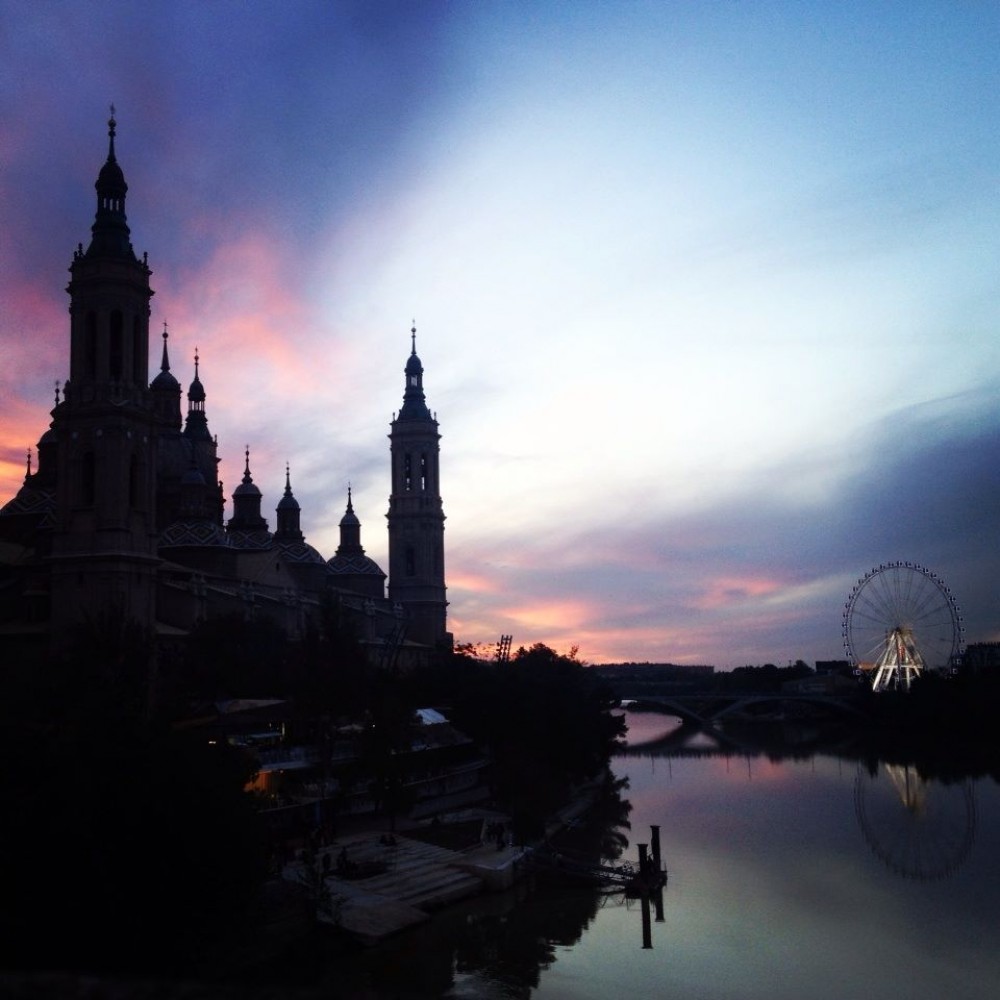The Great Gatsby has been very interesting in relating it to other novels we have read this year. We see the same representation and dedication to a certain group of people, just like in The Sun Also Rises. As Hemingway writes in the name of the “Lost Generation” of expatriates in the 1920s, Fitzgerald writes for America during the same time. He clearly depicts the decadence and lavishness of the time. People always describe the 20s to be one big party, just like those of Jay Gatsby’s. Fitzgerald portrays themes of the time like the heavy drinking and alcoholism of the age, although Prohibition was in effect. Relating it again to The Sun Also Rises, we see how Fitzgerald bases his characters generally off people he knew in real life, just like Hemingway does. For example, Fitzgerald bases Gatsby and Nick Carraway off two sides of his own personality. Daisy is based off Zelda, his wife. The Sun Also Rises and The Great Gatsby are both two very modernist novels, as they challenge societal norms and rules. The two books use cars and transportation for some very profound metaphors and messages. I believe that The Sun Also Rises was modeled after The Great Gatsby, but intended as a “one- up” or response for Fitzgerald. Hemingway was known to be a very competitive man and could have been jealous that Fitzgerald was stealing all the spotlight.
Semana Santa
For Semana Santa, I traveled with Ed to MAlaga. We then met up with Elie two days later and spent one last day in MAlaga. Once Edward left to met his mom, we went to Torremolinos. After two days in Torremolinos, I returned to Zaragoza and rested for two days. I then left with Kelia to LogroNo for three days. It wasn’t one gigantic trip, nor was it a totally relaxing week at the beach. I was able to explore new places and parts of the culture, but also have a lot of fun.
It started when Ed and I took a 13 hour bus down to MAlaga from Zaragoza the first night of break. I only got three hours of sleep on the bus because I lost in my thoughts. It’s a quite profound feeling when you know that the only conscious people are you and the bus driver, traversing through Andalucian terrain in still of the night. When we arrived, we took a cab to our hostel, dropped off our things, and immediately went to find the beach. We watched the sun rise over the hills of MAlaga with our toes in the sand. We then explored MAlaga. The port is very commercial, almost like a boardwalk, with clothing stores, restaurants, ferry tours, bike rentals, and trampolines. The rest of MAlaga is a beautiful mix of precious old buildings and stunning futuristic ones. We explored an 11th century Muslim castle, went on a hike to the highest point in the city to watch it all, ran around the streets of the center city, watched processions, hung out with kids from Madrid, hung out with kids from MAlaga, had a cocacola with a malagueNa, of course, hit the beach every day.
Elie and I then took the bus to Torremolinos and spent the next two days on the beach and exploring the small touristy streets and boardwalk. My favorite part of this trip with Elie was making our own food. Though it was as simple as ham and cheese sandwiches and eggs, I loved it. The idea of making one’s own food on a trip made me realize how mature and responsible we had to be on these trips, because many people don’t start traveling without a “supervisor” of some kind until college. It really is amazing that we have the opportunity to do this. I finally went back to Zaragoza after a 14:30 hour trip in bus. I rested for two days, then prepared for LogroNo.
LogroNo was extremely relaxed. I think the ambiance of the city really helped that. We went out and just walked around, and checked out three exhibits; one about the Iberos (ancient Iberian people before the Romans), one about the fortifications of the city in the past, and a random art exhibit. We went to a vineyard that Ernest Hemingway frequently visited and learned about the wine process. We also went out for tapas in the famous Calle Laurel (mushrooms,oysters, and foie).
Over all, these three trips were full of amazing experiences and lots of fun. I’m so lucky to have the opportunity to travel like this.
Shadow Cities and Invisible Cities
“Shadow Cities” and “Invisible Cities” both share themes of originality and comparisons in general. In “Shadow Cities”, Acimen talks about how we compare everything to what we already know, or in this case, other cities shadowing one city. The author says we compare them “because finding parallels can be more compelling than finding a home, because without parallels, there can’t be a home, even if in the end it is the comparing that we like, not the objects we compare”. This also applies to the theme of originality. In “Inivisble Cities”, a postmodernist idea that nothing is original, and everything will repeat itself. All of this relates to perception, and how one person visions a city differently than another.
Plasencia–> Aceituna, cInco dIas
Aceituna is a pueblo outside of Plasencia. It is known and named for type of olive that is grown there. I went there with my host brother to escape the bustle of the city. We went for a walk, passing flocks of sheep and cattle while we talked about our most intimate encounters with nature. Everything was so peaceful. A storm had just run through the area, and many regions were flooded. Our stroll came to halt when we came to a stream of rain water crossing the road, rushing down the mountain. Without speaking, we immediately took a moment to watch the water, to listen to the trickling and flowing. After about five minutes, I turned to my brother and told him I was happy to have shared this moment with him. I told him it was the most relaxed I had been in a very long time. After a period of unrest, chaos, anxiety, and stress, the storm passed in my mind, the way it had in Aceituna.
Isidora, An Invisible City
Isidora is the city of our dreams. When we are not in a city, we dream about the ideal city, and Isidora is this ideal. Spiral staircases, cockfights, and women. However, one only arrives after the dream is lost, and not wanted anymore. Isidora, “where the foreigner hesitating between two women always encounters a third”.The desire of this city is lost after arriving, and it isn’t ideal anymore.
This city signifies the city we used to dream about until we grew out of that dream, realized it wasn’t what we wanted, or really wasn’t ideal.
Postmodernism
The idea that nothing makes any sense, life is chaos, and therefore, nothing exists. I can understand this by applying it to perception. Our realities our based on perception. Some things are widely believed by one group of people, while the other side may think totally opposite. How we believe things to be is our reality.
Getting Lost
In this quote, the essayist is saying that we must let ourselves go in order to intend to get lost in a city, like in the way we let ourselves get lost in a forest. To throw yourself into the world, not knowing where you are, but still going on. This type of being lost is the best analogy to our journey in life.
Relating this to the ideology in de Botton’s The Art of Travel, we have to open to getting lost. We have to go consciously into it with intention of feeling something, just like travel.
On Possessing Beauty
In this chapter of The Art of Travel, de Botton presents the topic of beauty, and how our understanding of it differs on how we see it, especially with photography. He argues that with photography, we aren’t able to fully understand the beauty of something, because it doesn’t properly represent the beauty of the subject. However, he states that by drawing or “word painting” (writing and describing something thoroughly) we can develop a better understanding of the beauty than before because we notice things we didn’t see beforehand.
I am a terrible photographer. I am never satisfied with my photos, because I too feel like they don’t perfectly capture the things I experience. I always feel like I am trying to tell a funny story to someone who can’t find humor in it. “You would only understand if you were there”. The same goes for photography and beauty. Sadly, I’ve never tried to draw something beautiful, but I have tried to describe something, and if I really put everything into it, it perfectly describes my experience, which may not be the same for other people. We can relate this to the common phrase “beauty is in the eyes of the beholder”. We all see different qualities in everything and everyone.
Sublime
Over time, it wasn’t only nature that became sublime. We started to amaze ourselves with incredible technological advancements. I believe the most sublime (and the scariest) moment anyone has experienced through science and technology is the creation and dropping of the atomic bomb. Knowing that something like that has so much power, the scientists must have been in awe, yet terrified of what they were doing. And while the dropping must have been horrendous, seeing it from a distance must have been beautiful (I know how terrible all of this sounds, but it really would be beautiful). Something they had never seen before, so massive and powerful, coming with an incredible amount of speed.
Summary, Paraphrase, and Direct Quote from “The Art of Travel”
Summary:
In Chapter 4 of The Art of Travel by Alain de Botton, the author suggests different motives of why people travel (one being curiosity), and with Alexander von Humboldt as his guide, he travels to Madrid. Von Humboldt was a scientist of many types who traveled to South America and encountered a totally new world of science. De Botton arrives in Madrid knowing everything about the city, so he isn’t excited for his trip. He keeps a closed mind throughout the trip. De Botton comes to the conclusion that having no expectation or perception of a place is better, and that in order to have a good trip, one must keep a positive and open outlook.
Paraphrase (page 116):
On page 116 of The Art of Travel, Alain de Botton explains how curiosity works. We ask one question, then that leads to another, and it goes on forever.
Direct Quote:
In chapter four of The Art of Travel, Alain de Botton talks about the timing of traveling to certain places and how time may affect our impression of those places. De Botton writes: “A danger of travel is that we may see things at the wrong time, before we have had an opportunity to build up the necessary receptivity, so that new information is as useless and fugitive as necklace beads without a connecting chain.”
In other words, De Botton is saying that we may not be ready to appreciate a place because we aren’t ready to receive it and really understand it. For example, I went to the Grand Canyon too young. Now, I’m sure I would admire the beauty of it, but I was more preoccupied with playing football with my brothers in the RV park. I believe that the receptivity works in both ways. I think that one may be too old to really welcome a place. For example, while I feel that I’m not ready to enjoy London, I also feel that I have a limited time before London won’t interest me at all.

